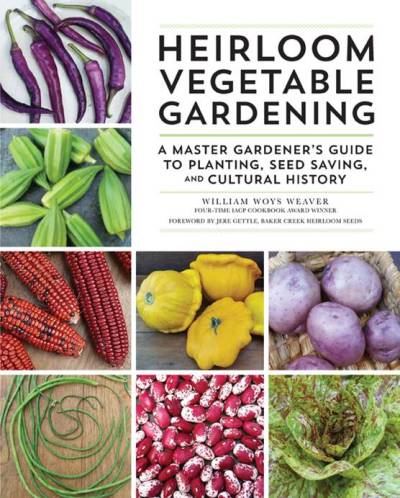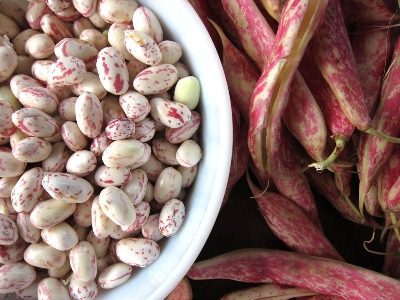Maybe you’re a sustainable gardener who likes to preserve your seeds year after year. Or maybe you’re just trying to distance yourself from the world of GMOs. You could also be looking to diversify your gardens. Luckily, heirloom seeds can help you do all three.
 For those looking to achieve the goals mentioned above, whether the heirloom seeds produce vegetables, fruits, or flowers matters very little. What they love is the history and uniqueness, and the chance to protect the cultivar from extinction. Making sure you can grow the same plant in the next season is easy; just make sure you save the seeds from every harvest. What you’ll become is a sustainable grower; your plant will be better able to withstand your local climate as a result. You both win!
For those looking to achieve the goals mentioned above, whether the heirloom seeds produce vegetables, fruits, or flowers matters very little. What they love is the history and uniqueness, and the chance to protect the cultivar from extinction. Making sure you can grow the same plant in the next season is easy; just make sure you save the seeds from every harvest. What you’ll become is a sustainable grower; your plant will be better able to withstand your local climate as a result. You both win!
Heirloom seeds can be an obsession, and some have been lucky enough to turn it into a career. William Woys Weaver is the author of Heirloom Vegetable Gardening: A Master Gardener’s Guide to Planting, Seed Saving, and Cultural History. He originally started his career as an architectural book editor. Then he discovered a collection of seeds his grandfather had stored away in the freezer. He was never able to look back.
Today, Woys Weaver is well-known in the world of heirloom seeds. He’s the author of several books on cooking and gardening. But his Heirloom Vegetable Gardening book, first published in 1997, was a hit. Funny enough, he never actually set out to write a book about heirloom vegetables or the history of gardening. His real passion was restoring his grandfather’s gardens with those seeds from the freezer.
A truly amazing thing was born from his passion: The Roughwood Seed Collection. It is one of the world’s largest private collections, with some 4000 different heirloom plants represented. In some cases, there are no other seeds in the world like them; they are the only ones. As his seed bank grew, Woys Weaver researched everything he had. His extensive notes formed the hit-book, giving us wonderful insight into the history of growing and preserving heirloom seeds. Who knew our modern raised garden beds are actually as old as the hills? The idea came to the United States with the Pennsylvania Germans, as did intensive planting. Just a tiny sample of what you’ll learn in Woys-Weaver’s book.

Chioggia Beets
Interestingly enough, heirloom seeds are at the heart of the seed-saving movement that started in the 1970’s. The reason why is only those seeds can reliably give you the same harvest year after year. It’s a perfect science. For instance, you could never try saving seeds from vegetables bought at the grocery store. They’re picked before ripe and can produce any number of parents in their mixed pedigree. But, they’re also monocrops and mass-produced clones. Woys-Weaver is an expert on this kind of thing; those seeds are not likely to survive alien diseases. Take the Irish potato famine, for example. It was caused by monocropping mass-produced clones, and it could happen again. Only modern ‘disease resistance breeding’ can fend-off known diseases and pathogen strains.

The seed-saving movement is a wonderful thing; in addition to educating us on heirloom seeds, it also ensures there will always be fruits and vegetables to eat. Whether bred for commercial farming or home gardens, all these seed catalog hybrids (F1, F2, etc.) are mass-produced clones. You cannot recreate the exact plant from seed. And if you ask me, that’s a blessing. There are thousands of more resilient and open-pollinating options in heirloom seed collections, like Roughwood, for example.
Here’s some great news: the updated edition of Woys-Weaver’s heirloom seeds gardening book is hot off the presses. The new printing has even more plant entries and advice and covers both gardening and seed-saving through all the growing zones. More than 300 plants are featured, giving you a little history, culinary description, and growing information.
Both an interesting read and an excellent reference, every gardener should have a copy of Heirloom Vegetable Gardening by William Woys Weaver. While it is still possible to pick up a used copy of the first edition, the new version has a lot more to offer. Released in March 2018, it’s available from Amazon.
Learn more about William Woys Weaver and his garden at Roughwood here.
Images courtesy of But I’m Hungry, Everybody Likes Sandwiches, and Out of My Shed (respectively). Book cover courtesy of The Quarto Group.
[/et_pb_text][/et_pb_column][/et_pb_row][et_pb_row][et_pb_column type=”4_4″][et_pb_comments _builder_version=”3.0.91″ show_avatar=”on” show_reply=”on” show_count=”off” background_layout=”light” header_font_size_tablet=”51″ header_line_height_tablet=”2″ custom_button=”off” button_icon_placement=”right” /][/et_pb_column][/et_pb_row][/et_pb_section]